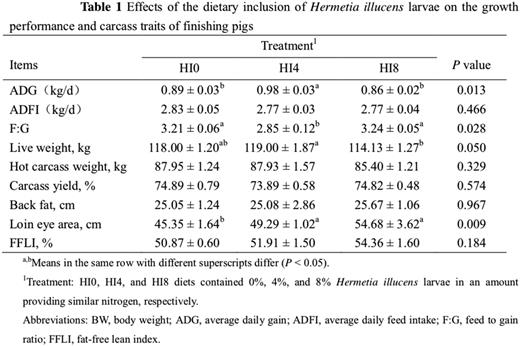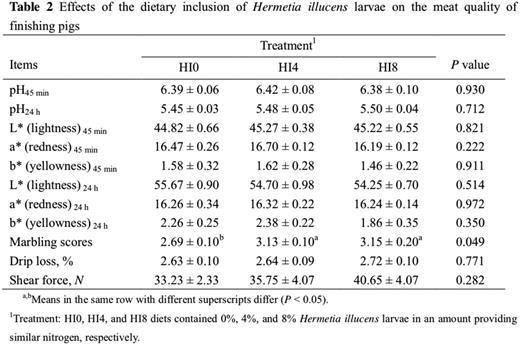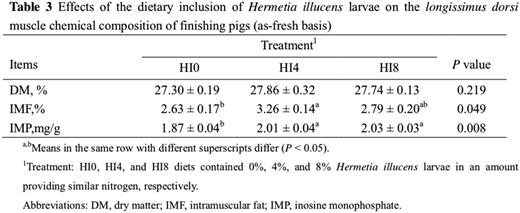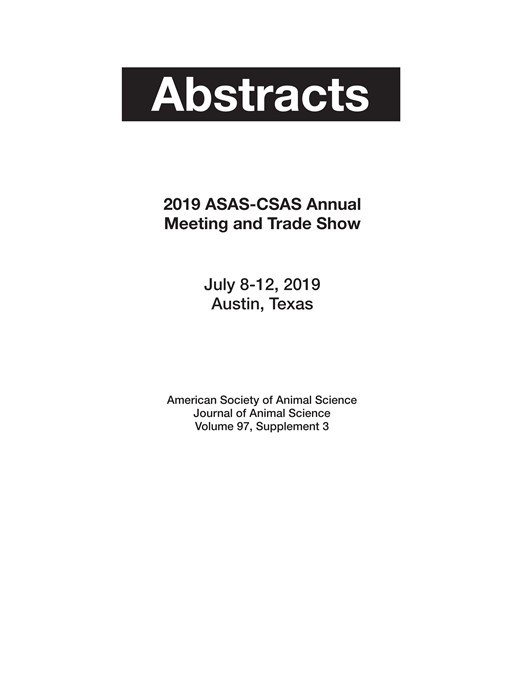-
Views
-
Cite
Cite
Xianyong Ma, Miao Yu, Zhenming Li, Dun Deng, Ting Rong, 276 Effects of Hermetia illucens larvae meal on growth performance, carcass traits, and meat quality in finishing pigs, Journal of Animal Science, Volume 97, Issue Supplement_3, December 2019, Pages 105–106, https://doi.org/10.1093/jas/skz258.217
Close - Share Icon Share
Abstract
Object: This study aimed to investigate the effects of Hermetia illucens larvae meal on growth performance, carcass traits, and meat quality of finishing pigs. Methods: Seventy-two crossbred (Duroc × Landrace × Large White) pigs (76.0 ± 0.52 kg) were randomly allocated to three experimental treatments, and fed the diet with supplementation of 0%, 4%, or 8% Hermetia illucens larvae meal (HILM), respectively. The experiment lasted 42 days. Results: The average daily gain (ADG) of pigs in 4% HILM group was higher, and the feed gain ratio (F/G) was lower than the control and 8% HILM group (P < 0.05). The loin-eye area, marbling scores, and inosine monophosphate (IMP) content of Longissimus thoracis muscle (LM) in 4% and 8% HILM group were higher than the control group (P < 0.05). There were no diffenences on backfat thickness, pH value, meat color, drip loss among three groups. Compared with the control, 4% HILM significantly increased the content of intramuscular fat (IMF) (P < 0.05). Meanwhile, the mRNA expression level of fatty acid synthase (FAS), acetyl CoA carboxylase α (ACCα), lipoprotein lipase (LPL), and MyHC-IIa in the LM was higher in 4% HILM group than that in 8% Hermetia illucens larvae meal and the control group (P < 0.05). The abundance of Lactobacillus, Pseudobutyrivibrio, Roseburia, Oribacterium, and Faecalibacterium was higher in 4% Hermetia illucens larvae meal group than the control group (P < 0.05); The abundance of Streptococcus was lower and Peptococcus was higher in 4% HILM group than 8% HILM group. Conclusion: HILM can be used as an effective feed ingredient in finishing pig’ diet up to 4% level, which was beneficial for the growth performance, carcass trait, and meat quality of pigs, and the underlying mechanism maybe due to the altered lipogenic potential, myofiber characteristics and the microbial composition regulated by HILM.








